
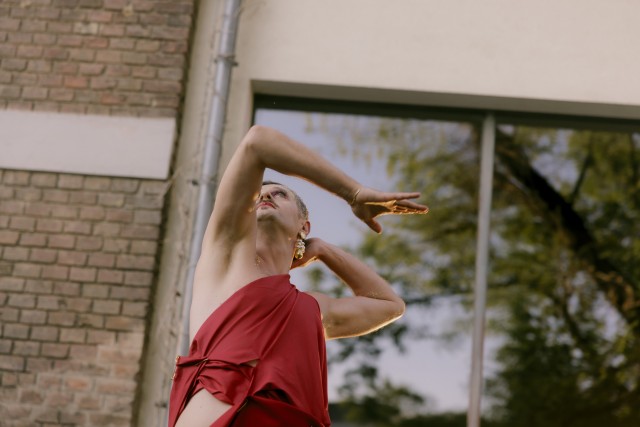
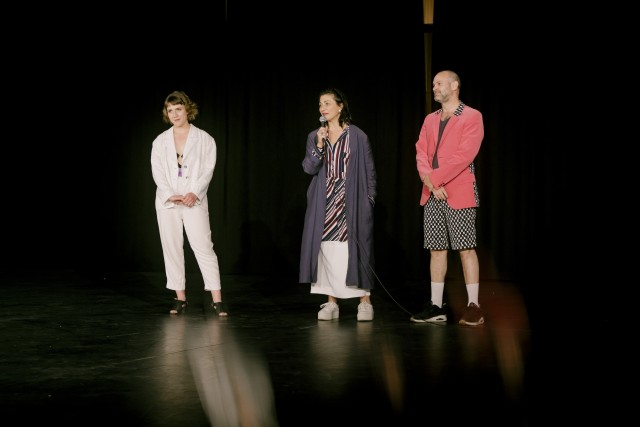
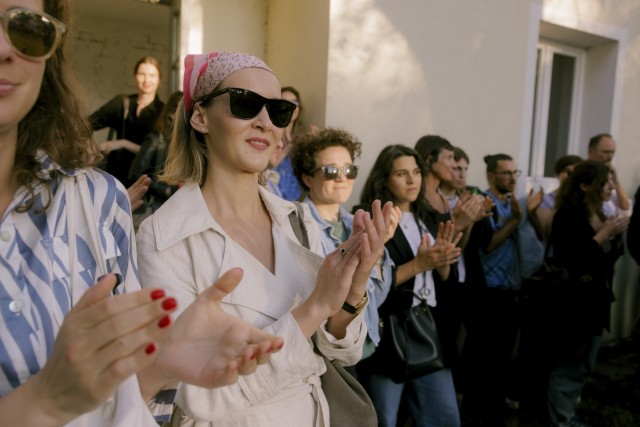

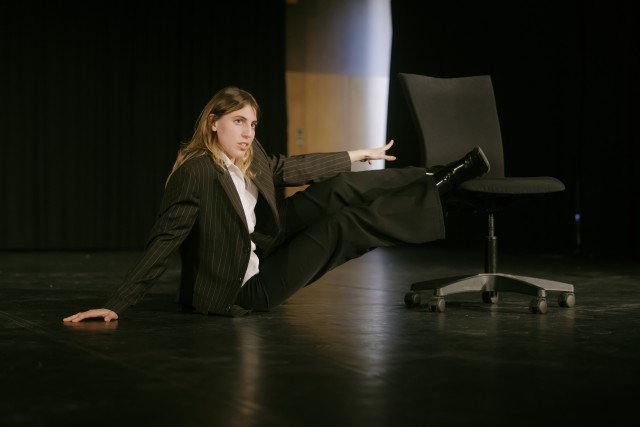
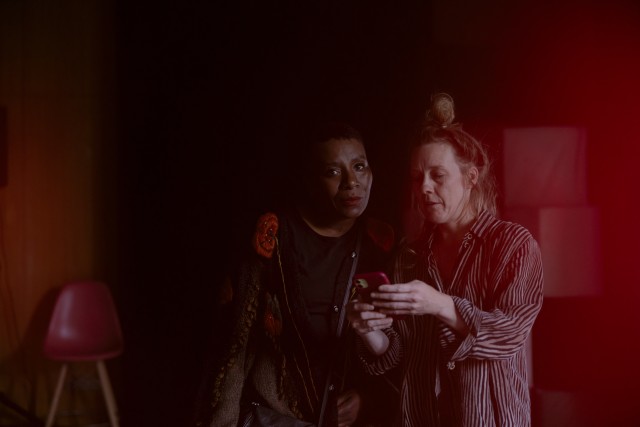

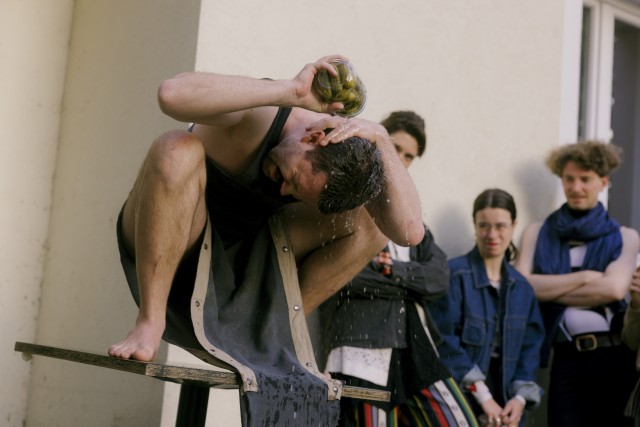
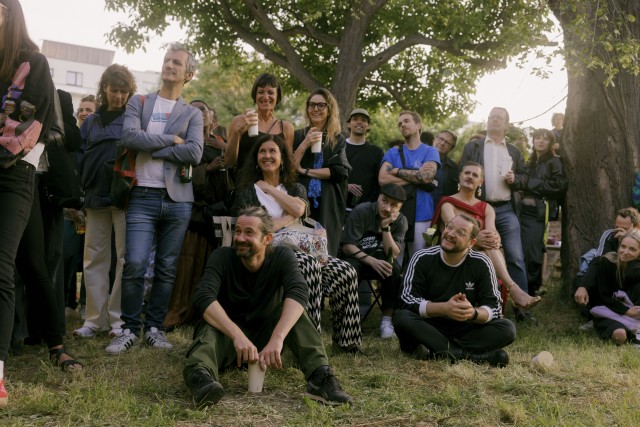
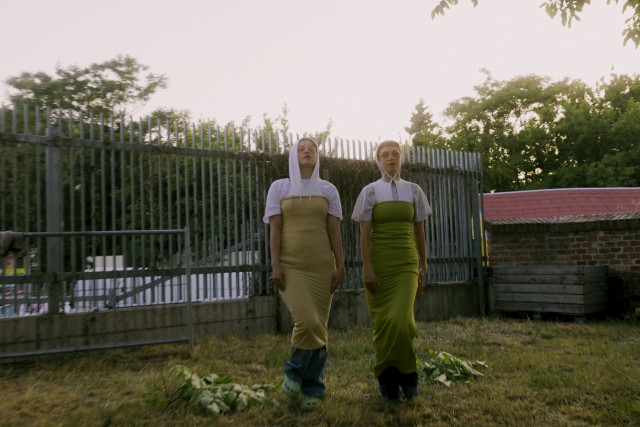
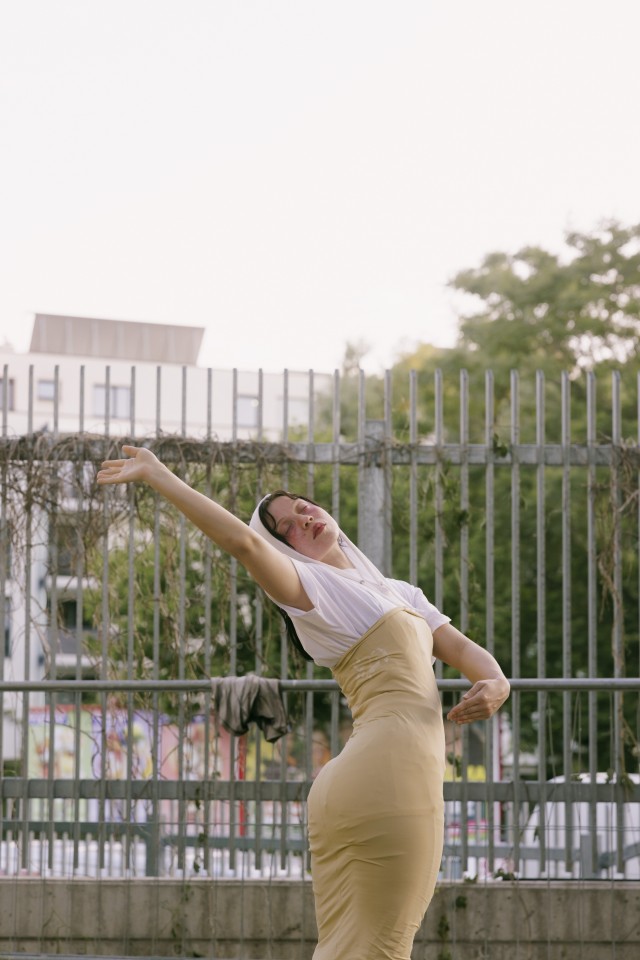
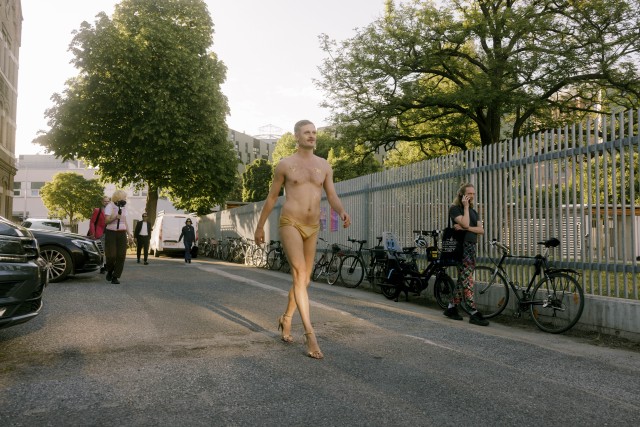
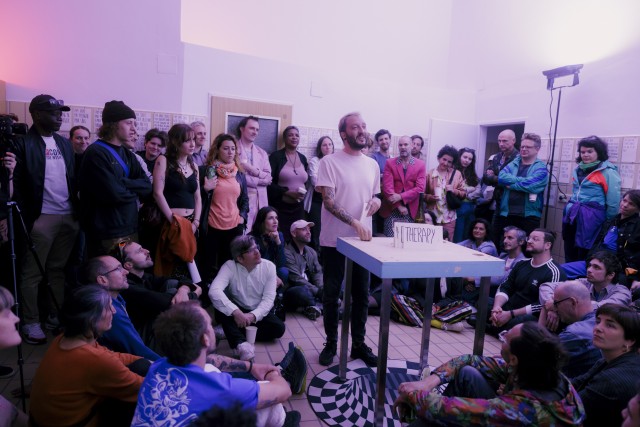
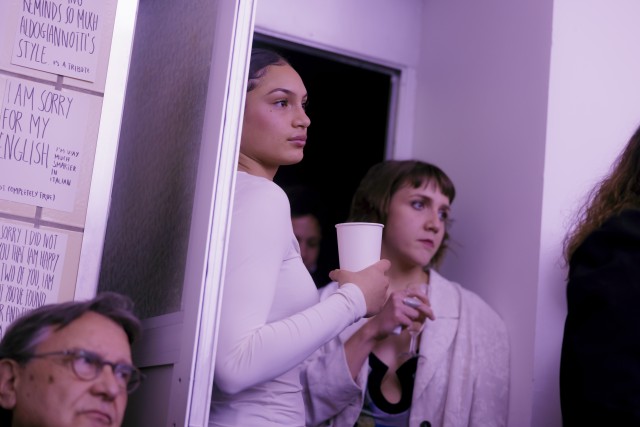
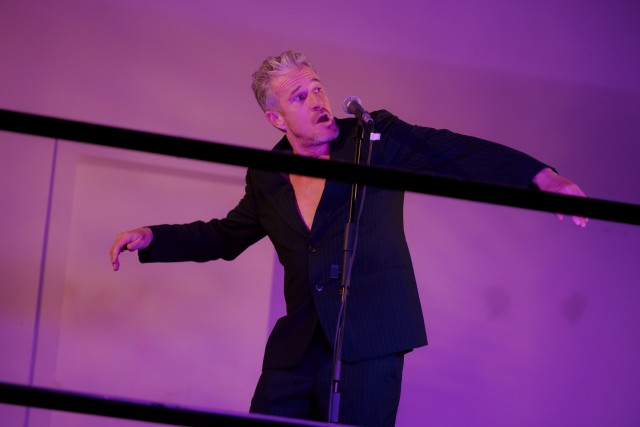
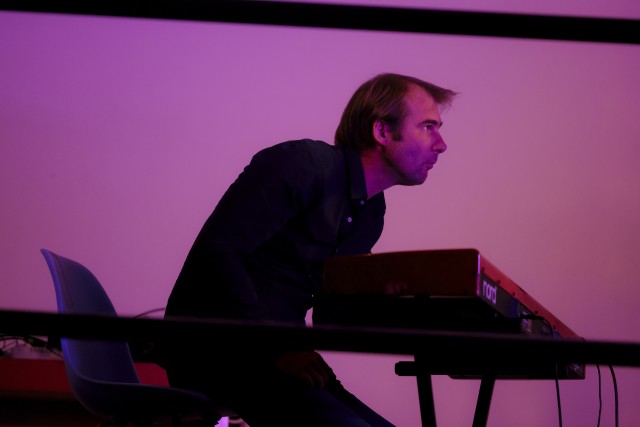
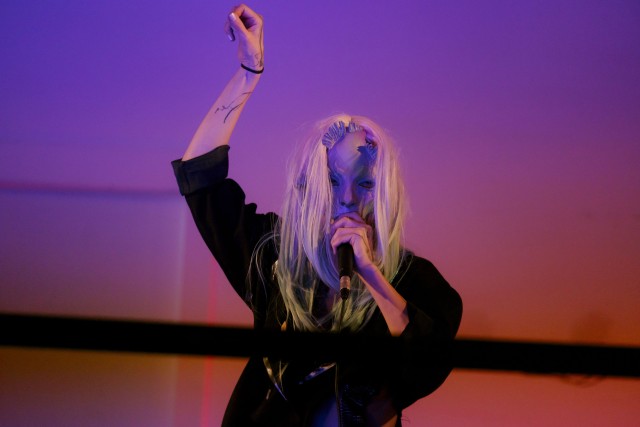
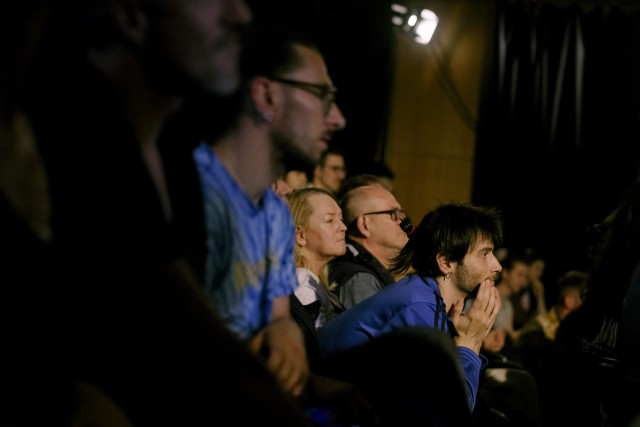
(c) Marcella Ruiz Cruz
(c) Marcella Ruiz Cruz
(c) Marcella Ruiz Cruz
(c) Marcella Ruiz Cruz
(c) Marcella Ruiz Cruz
(c) Marcella Ruiz Cruz
(c) Marcella Ruiz Cruz
(c) Marcella Ruiz Cruz
(c) Marcella Ruiz Cruz
(c) Marcella Ruiz Cruz
(c) Marcella Ruiz Cruz
(c) Marcella Ruiz Cruz
(c) Marcella Ruiz Cruz
(c) Marcella Ruiz Cruz
(c) Marcella Ruiz Cruz
(c) Marcella Ruiz Cruz
(c) Marcella Ruiz Cruz
(c) Marcella Ruiz Cruz
(c) Marcella Ruiz Cruz
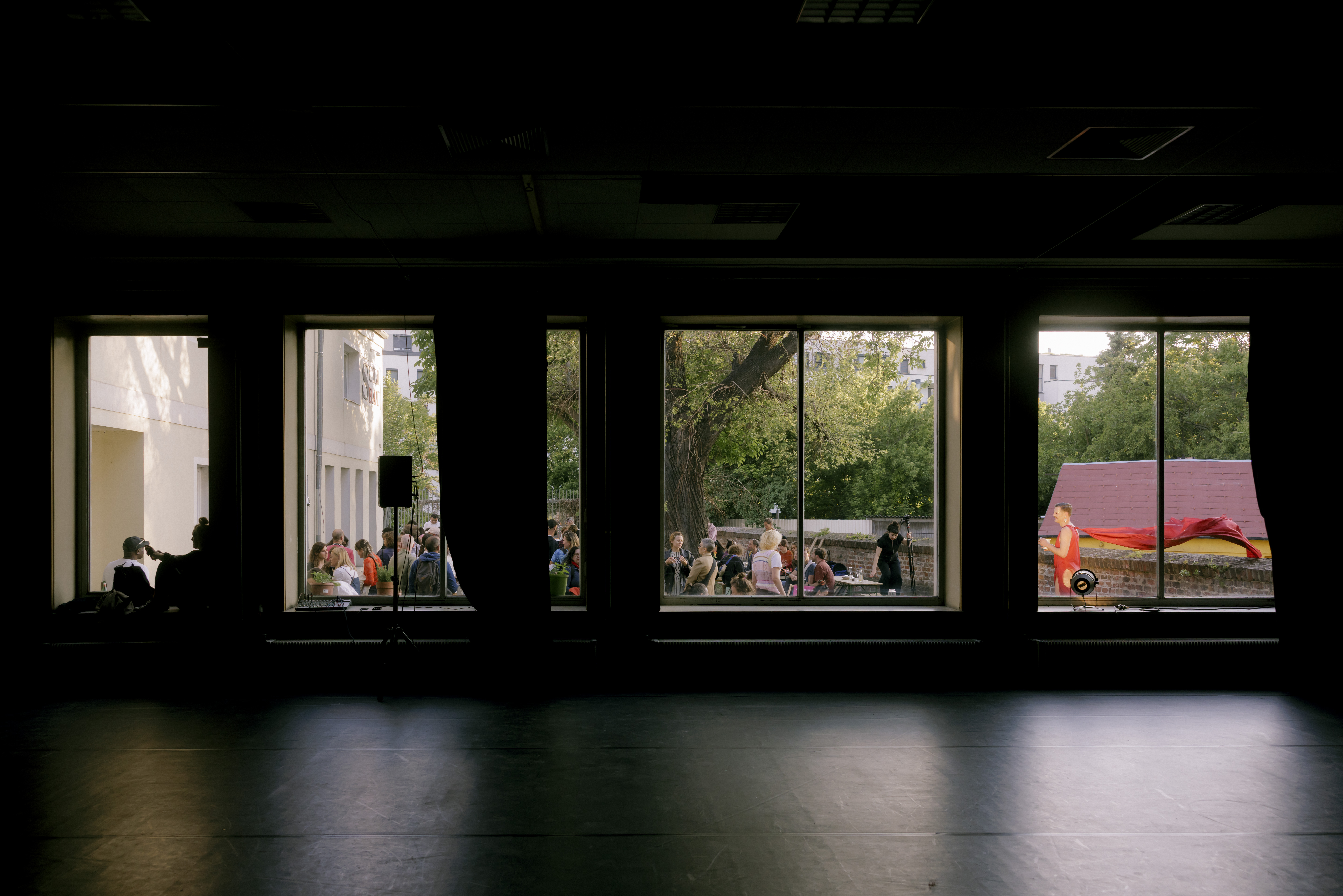
(c) Marcella Ruiz Cruz
Bears in the Park has become an important pillar for the Viennese performance scene in recent years. The art space, formerly located in Kempelenpark in the 10th district, provides studios free of charge and hosts a series of events throughout the year. Since 2016, the Huggy Bears Mentoring Program has been supporting emerging artists over the course of seven months in the development and production of their pieces.
In early April, Bears in the Park has moved to a new home in Simmering and celebrated a Grand Opening on May 13 to mark the occasion. We visited the opening to take a photo series and spoke in advance with the two directors of Bears in the Park, Philippe Riéra and Charlotte Bastam.
Choreographic Platform Austria
Maybe we can start by having you both introduce yourselves so that we know a bit about your backgrounds.
Philippe Riéra
I started my career in France as a performer, dancer, and actor. After 20 years of working with other people's companies, I decided to try something new and formed a collective. At the same time, I was relocating to Austria. I founded a company called Superamas, which has been successfully running for 20 years. Following this period, I initiated a project called Huggy Bears. It was a mentoring and support program for the emerging scene in Vienna, in collaboration with Caroline Madl. Initially, we didn't have any dedicated locations, so we made use of vacant studios in the city. The idea was to collaborate with local artists and production houses to ensure artists were not isolated in studios but had the best working conditions possible. When Caro Madl moved on to another job, I continued the project with Charlotte Bastam. We had a space in the 10th district that we called Bears in the Park, but we were evicted when the building was demolished. Now, we have found a beautiful new location in Simmering, in the 11th district.
We aim to support young artists — not necessarily young in age, but new to the art scene — at every level to help them establish themselves.
Philippe Riéra
Charlotte Bastam
I first studied anthropology, then did a masters in Science and Technology Studies and spent some time abroad in Latin America, Central Asia and Italy. Alongside I aspired to become a journalist, did internships and worked freelance. Four years ago, I came to Vienna to work and conduct research as a fact-checker. That was during the first year of the COVID-19 pandemic. But I was somehow discontent about how journalism and classical academia investigated and communicated knowledge. So I hoped to find more experimental approaches through artistic practices. I started the masters Art and Science at the Angewandte which also brought me to their Performance lab. In that way something came back from my past and now I am exploring ethnographic practices through a performative lense. Yet, I am still somewhat new to performance art and my perspective is a different one, informed by all the things I did before. But it was very exciting when I got the job at Bears in the Park in the beginning of 2022. Since then it’s performance art full on.
Can I tell the story of the job interview?
CPA
Sure.
Charlotte Bastam
The interview situation was quite funny in a way. Caro kept asking me the serious questions in German: Are you up for applying for the yearly funds? What is your budgeting experience? Phil always intervened with more personal questions in English like: What is your biggest weakness? Finally we ended up kickboxing in one of the studios because it was listed on my CV as one of my hobbies.
Philippe Riéra
I wanted to know how high you could kick.
Charlotte Bastam
I think you wanted to know if you would get along with me because that's really important.
Philippe Riéra
Yeah, and if you have a sense of humor.
Charlotte Bastam
Anyway, then I got the job. Phil generously included me from the start in curational plannings and I am also in touch with artists on a more dramaturgical level. Interestingly, all the seemingly unrelated things I did before have now found their place in this work. Anthropology, dramaturgy, journalism, and communication all play a role. It’s been and still is a great learning experience for me.
CPA
Can you tell us a bit about the Huggy Bears Mentoring Program?
Philippe Riéra
First off, we select four productions a year and we try to meet their needs in terms of research, rehearsals, and production, including premieres, through our collaboration with brut, WUK, and Impulstanz. Additionally, our Mentoring Program addresses administrative and production concerns. We aim to support young artists — not necessarily young in age, but new to the art scene — at every level to help them establish themselves. Our approach is very much tailored to individual needs. With some artists, I spend many hours in the studio over several months. Others, who already have a large crew and outside advisors or dramaturgs, may only require my attendance at a few rehearsals.
We want to remain open to various forms of performance. Bears in the Park is a transdisciplinary art platform, but it focuses on performance art.
Charlotte Bastam
Charlotte Bastam
However, what is mandatory are the monthly meetings. It is very valuable for the artists to have this continuous group interaction, not only with us but also with other artists. The Mentoring Program starts in March with the Handle with Care series at imagetanz festival by brut Wien. This marks our first collaboration, where the Huggy Bears project is invited to present a work-in-progress. Participants can discuss their work and typically present a piece of about 20 minutes, followed by a Q&A session. This serves as the starting point of their journey with us, offering them initial exposure to an audience and to venues like Brut.
CPA
Can you tell us what happens in the monthly meetings?
Charlotte Bastam
We meet every month for three to four hours. Ideally, in these meetings, at least one group or solo artist presents their work-in-progress, followed by a group feedback sessions. It's crucial that everyone attends and commits to these meetings, as they foster a supportive group energy. As we approach the premieres, it’s beneficial for participants to have a strong relationship with each other, providing not only practical but also emotional support since everyone is going through the same process.
Philippe Riéra
In addition to what Charlotte said, it's beneficial for artists to receive feedback from people they didn't choose themselves. This means feedback that isn't coming from parents, loved ones, their chosen dramaturgs, or selected outside eyes, but from random individuals. This broadens the horizon of critique, which is very valuable and constructive for the artist. From the artist's perspective, it's also important to communicate with people who aren't already convinced about their work. They have to convince others who might not know anything about their work, which encourages better communication. This process is essential because part of our job is to communicate and promote ourselves, and this provides a good opportunity to practice that.
CPA
What is going to happen this year regarding the Huggy Bears artists?
Charlotte Bastam
Right now, we are hosting four projects. From mid to late November, there will be premieres at studio brut and WUK performing arts. The collaboration with brut is newer as WUK went through quite some reconstructions last year and the premier dates couldn’t be assured. In the end we got both venues. This is great because we continue to work with both spaces and their dramaturgs.
It's beneficial for artists to receive feedback from people they didn't choose themselves. This means feedback that isn't coming from parents, loved ones, their chosen dramaturgs, or selected outside eyes, but from random individuals.
Philippe Riéra
Philippe Riéra
As part of the Mentoring Program, we also offer master classes in technical aspects of performance, such as sound design, video design, and light design. We conduct these classes here and at WUK. Our collaboration with studio brut ensures that every artist has one week in a fully equipped theater. This allows them to experiment with their work in a different space and to work more specifically with various media. Additionally, there will be a collaboration with Impulstanz, where the artists will participate in several workshops and have VIP access to certain events.
CPA
Can you talk a bit about the selection process? The participants in your program seem to have very different approaches to performance.
Charlotte Bastam
We have an open call in autumn, around September or October. We want to remain open to various forms of performance. Bears in the Park is a transdisciplinary art platform, but it focuses on performance art. We receive applications from people who have diverse art backgrounds, often more oriented towards visual arts. The turning point for these artists is when they start thinking of their work as a stage setting, considering the audience's perspective. There's a translation that needs to happen in their thinking process, which we can assist with. However, there must already be an initial concept. Then we can further develop it. Our collaboration partners provide the stage settings. While these settings can be flexible, such as a black box at Projektraum WUK, there are still certain constraints. Nonetheless, the goal is to guide the audience through the experience, whether it’s a traditional stage performance or a more installation-based approach.
CPA
So it has to be something that works in one of these spaces.
Philippe Riéra
Yes, also, sometimes we receive site-specific applications. These projects could theoretically work if the artists already have an idea of how their performance would fit within these spaces. In general, performance art can happen outside and can last for days. However, we are more oriented towards stage settings. Beyond that, we are quite open regarding themes, the number of participants, and different approaches. It's also about opening up beyond the niche. There are niches for the music scene, experimental music, dance, performing arts, the queer scene... To us, they are all valid. As long as the performance is time-based, it is interesting to us, whether the main medium is sound, dance, or verbal communication. We are keen on reflecting and reproducing the diversity of the artistic scene in Vienna.
CPA
Can you tell about the new space that you just moved into?
Philippe Riéra
Next to the mentoring/supporting program of the Bears, we also run a residency program. In our new location, we have two ateliers for visual artists, photographers, and fashion designers, one dance studio of about 70 square meters, and a large dance hall of approximately 250 square meters. This setup accommodates a variety of practices. People should know that residencies at Bears in the Park are always for free. Why do we do that? It's a critical stance from our side. We want performers and choreographers to be paid better and not have to spend hundreds or thousands of euros on studio rentals. Without being too preachy, this is our way of being political through our choices in working conditions.
Charlotte Bastam
The working conditions are already precarious enough.
Philippe Riéra
There are very low standards in Austria. How to make a living as an artist if you don't come from a wealthy family is a real challenge here.
Charlotte Bastam
Also we are trying to be easily approachable. Often we already know the people as they keep coming back. But if you're new, there’s no continuous open call like in other places where you have to apply in a formal manner. You just send an email, explain what you want to do, and we see if we have space available during that time. Sometimes though we may not be able to fulfill certain needs.
There are very low standards in Austria. How to make a living as an artist if you don't come from a wealthy family is a real challenge here.
Philippe Riéra
Philippe Riéra
For instance, we don’t fulfill requests when people want two or three hours a week to teach ballet or contemporary dance. We are not a dance academy; we are an art space where people develop their projects. To support this, we offer weeks-long residencies, not days or hours-based residencies. But we are also open to engaging with the local community in Simmering. If there are news about a choir or associations needing space, we can help by offering our facilities. This way, the artists can meet real people, and vice versa.
Charlotte Bastam
As we are also a “Kulturankerzentrum”, a title given by the city of Vienna, we are aspiring to reach out into the neighborhood and the district. Now that we are new here, let’s see what kind of collaborations will happen in Simmering.
CPA
What kind of place has this been before you moved in?
Philippe Riéra
This used to be part of the Wiener Netze compound.
Charlotte Bastam
Yes, this used to be the cafeteria. The big studio, which is 250 square meters, originally was the dining hall. Behind it, where the other studios are, the walls and the floor are covered in tiles because these were the kitchen spaces. You can still see where they closed the gap in the wall which used to be where the food was passed-through (the “Durchreiche”).
Philippe Riéra
At one point, on the ground floor, there used to be a police station. Thank God they’re gone, so we can do the arts.
Charlotte Bastam
Yes, but before us, Volkstheater was here.
Philippe Riéra
This was a rehearsal space. It was a long process before it was clear we would get this space, but I’m happy we were stubborn enough to stick with it. This is much due to the continuous effort of our Technical Director Martin Schwab who found the place for us. I think this place will offer a variety of options and different economies. The big hall is particularly valuable; it’s rare to find such a large space in Vienna without a post in the middle. This space is versatile. We can accommodate small productions, solos, duets, or research-based projects, but we can also host a company with ten dancers. That flexibility is significant. I enjoy bringing together active artists from very emerging scenes because we learn from one another. Sticking to the same group of people can become very unhealthy and doesn’t push you to discover new things. Being exposed to other art forms, economies, and project dimensions is something I appreciate. I think it will be fruitful.
We are aspiring to reach out into the neighborhood and the district. Now that we are new here, let’s see what kind of collaborations will happen in Simmering.
Charlotte Bastam
Charlotte Bastam
This space, even more than the previous one, provides the possibility to host various activities. We will set up a big kitchen and community space, and we also have the garden which will be my favorite spot for most of the year.
CPA
What other plans do you have for the future?
Charlotte Bastam
There has been a lot of excitement recently, and I think we still need some time to focus on all our options. We need to work on the ateliers, especially for long-term residencies for visual and textile artists. We also have some plans for September and winter, possibly an event to get to know the district better. We are gradually getting settled and taking the time to determine what worked well before and to explore new possibilities here, rather than just replicating what we did at Kempelenpark.
Philippe Riéra
That’s why we also have this opening for the scene and invite interesting people to take a look. We want to hear their ideas on new assignments that we haven’t thought of before.
Bears in the Park Opening, May 13th
was hosted by Philippe Riéra and Charlotte Bastam
with Veronica Kaup-Hasler, Executive City Councilor for Cultural Affairs and Science
and the artists:
CAROLINA CAPPELLI, performance
JANNIS NEUMANN. performance
YOMER, performance
MARIA MERCEDES, dance
SEBASTIJAN GEč/GORAN BUGARIC, dance and fashion
ORLY, concert
MALIKA FANKHA/ DJ malenciaga, performance and DJ-Set

















